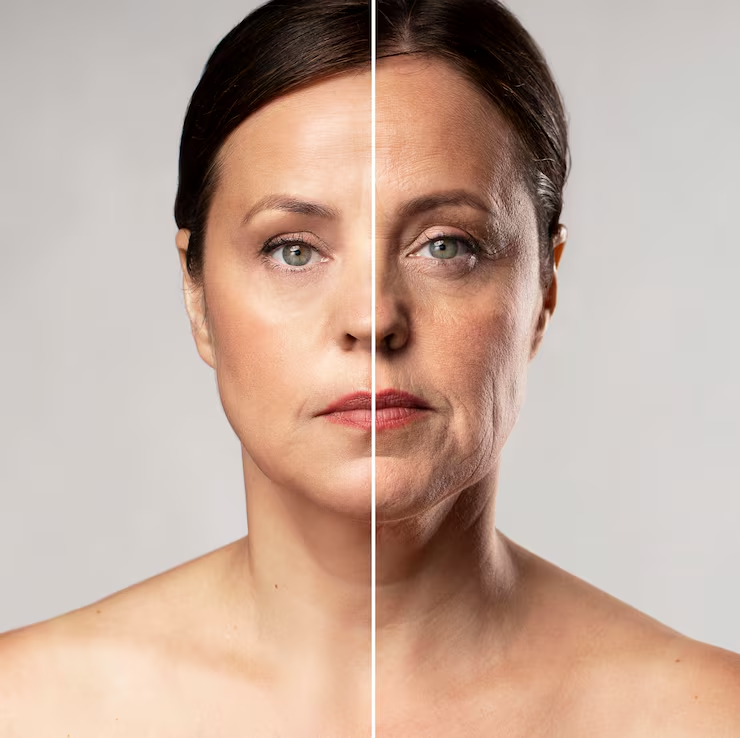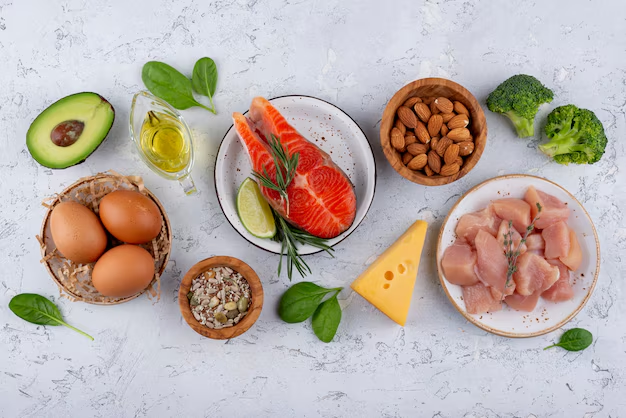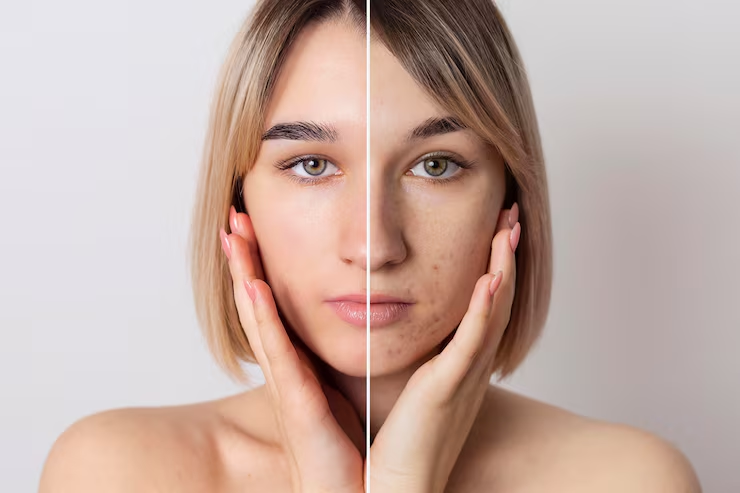How to avoid flabby skin after weight loss is a common concern for anyone shedding pounds. Rapid weight loss can leave the skin loose because it loses elasticity when fat disappears too quickly. Factors like age, genetics, and hydration levels also influence how the skin adapts to body changes. The good news is that with the right strategies, you can minimize sagging and achieve a firmer, more toned look.
A well-planned approach that includes strength training, nutrient-rich foods, and proper hydration can support skin tightening. Consistency is key to giving your skin time to recover and adjust to the new body shape. Gradual weight loss is always more effective for preventing loose skin.
Learning how to avoid flabby skin after weight loss empowers you to reach your fitness goals confidently. With patience and care, you can enjoy lasting results—firm, healthy skin and a slimmer, more defined body.
What is Flabby Skin After Weight Loss?
How to avoid flabby skin after weight loss occurs when your body loses fat faster than your skin can tighten. Skin elasticity decreases with age, genetics, or rapid weight loss, leading to sagging areas around the arms, abdomen, thighs, and face. Understanding how to avoid flabby skin after weight loss starts with recognizing that losing weight is only part of the journey; maintaining firm, toned skin requires specific strategies. Adequate hydration, balanced nutrition, and gradual weight loss help your skin adjust to your new body shape. Skin care routines, like moisturizing and gentle exfoliation, also contribute to better elasticity. By identifying problem areas early, you can focus on exercises, diet, and lifestyle habits that support healthy skin tone during and after your weight loss journey.
Why Flabby Skin Appears and Its Impact
How to avoid flabby skin after weight loss appears because the collagen and elastin fibers in the skin can no longer fully support the underlying tissue. Rapid fat loss, aging, poor nutrition, and dehydration accelerate sagging. Knowing how to avoid flabby skin after weight loss is essential not just for aesthetics but also for confidence and overall health. Loose skin may make exercise uncomfortable and increase the risk of irritation or infection in skin folds. Understanding why it happens motivates you to adopt preventive measures like strength training, protein-rich diets, and proper hydration. Supporting skin elasticity and muscle tone ensures your hard-earned weight loss reflects positively on your overall appearance, preventing disappointment and promoting long-term satisfaction.
When Should You Take Action?
It’s crucial to start thinking about how to avoid flabby skin after weight loss as soon as you begin your weight loss journey. Waiting until after losing a significant amount of weight can make skin tightening more difficult. Preventive measures, including gradual weight loss, resistance exercises, and hydration, are most effective during the weight loss process. Incorporating skincare routines, like using collagen-boosting creams or exfoliating gently, should begin early. Monitoring your skin’s elasticity and adapting your diet to include vitamins C, E, and protein will also help. Taking timely action ensures that your skin has time to adjust to your changing body, giving you a firmer, healthier look without the need for extreme surgical interventions later.
How Does One Prevent Flabby Skin Effectively?
How to avoid flabby skin after weight loss involves a combination of exercise, diet, and skincare routines. Strength training and resistance exercises help build muscle mass, which supports the skin and reduces sagging. Hydration is key; drinking plenty of water maintains skin elasticity. Nutrition rich in protein, antioxidants, and healthy fats supports collagen production. Gradual weight loss prevents the skin from stretching too quickly, while moisturizing and using collagen-boosting products can improve firmness. In some cases, massage and dry brushing enhance blood circulation, promoting skin tightening. Understanding how to avoid flabby skin after weight loss requires consistency and patience. By combining these approaches, you can achieve toned skin, maintain your weight loss results, and feel confident in your appearance without resorting to invasive procedures.
Top 8 Tips to Avoid Flabby Skin After Weight Loss
Lose Weight Gradually
Losing weight gradually is one of the most effective strategies for how to avoid flabby skin after weight loss. Rapid weight loss often leaves skin sagging because it doesn’t have enough time to adjust to the reduced fat layer underneath. By losing weight slowly, your skin can adapt naturally, maintaining elasticity and preventing loose, flabby areas.
To do this, aim to shed 1–2 pounds (0.5–1 kg) per week through a moderate calorie deficit combined with balanced nutrition and consistent physical activity. Avoid extreme diets or fasting methods that promise fast results, as they compromise skin health and overall wellness.
Extra tips include monitoring progress and adjusting caloric intake gradually. Pairing gradual weight loss with hydration, skin care, and resistance training further enhances skin firmness. Remember, slow and steady results are sustainable, healthier, and provide your skin the time it needs to tighten along with your body transformation.
Why it works: Slow, steady weight loss gives your skin time to adapt and tighten as the fat layer underneath decreases.
How to do it: Aim to lose 1–2 pounds (0.5–1 kg) per week by maintaining a moderate calorie deficit with balanced nutrition and regular exercise.
Extra tip: Avoid crash diets or extreme fasting, which cause rapid fat loss and weaken skin elasticity.
Incorporate Strength Training
Strength training is crucial for how to avoid flabby skin after weight loss because it builds lean muscle underneath the skin. Muscles act as natural fillers, giving your body a firm, toned appearance and reducing sagging. Without resistance training, fat loss can leave skin unsupported and loose.
To implement this, include full-body workouts 3–4 times a week. Exercises like squats, lunges, push-ups, and resistance band routines help strengthen major muscle groups. Using weights or increasing reps gradually (progressive overload) ensures continuous muscle growth, which tightens the skin naturally over time.
For extra effectiveness, combine strength training with proper nutrition rich in protein and vitamins that support muscle and skin health. This dual approach not only improves body composition but also enhances skin elasticity, helping you confidently achieve firm, toned results.
Why it works: Strength training builds lean muscle, which fills out the skin and creates a firm, toned appearance.
How to do it: Include full-body resistance workouts 3–4 times a week using weights, resistance bands, or bodyweight exercises like squats, lunges, and push-ups.
Extra tip: Progressive overload (gradually increasing weight or reps) encourages continuous muscle development, helping skin stay taut.
Stay Hydrated
Hydration is a key factor in how to avoid flabby skin after weight loss because water helps maintain skin elasticity and plumpness. Well-hydrated skin retains its firmness, supports collagen production, and reduces dryness that contributes to sagging. Dehydration can make flabby skin appear more noticeable, even if weight loss is gradual.
Drinking at least 8–10 glasses of water daily is essential. Include hydrating foods like cucumbers, oranges, watermelon, and leafy vegetables in your diet. Staying hydrated during workouts and throughout the day ensures your skin remains supple and resilient.
Avoid excessive caffeine and alcohol as they dehydrate the skin and weaken elasticity. By prioritizing hydration, your skin can adapt better to weight loss, reducing the risk of sagging and maintaining a healthy, youthful appearance naturally.
Why it works: Hydration keeps the skin plump and elastic, supporting collagen production and preventing dryness.
How to do it: Drink at least 8–10 glasses of water daily, and include hydrating foods like cucumbers, oranges, and watermelon.
Extra tip: Avoid excessive caffeine and alcohol, which can dehydrate the skin.
Eat Collagen-Boosting Foods
Collagen is the protein that provides structure and firmness to the skin, making it vital for how to avoid flabby skin after weight loss. As we age or lose weight, collagen levels decline, leading to sagging and reduced elasticity. Supporting collagen production helps skin tighten and stay resilient.
Include collagen-rich or collagen-supportive foods in your daily meals, such as bone broth, fish, eggs, leafy greens, berries, and citrus fruits rich in vitamin C. These nutrients enhance natural collagen synthesis, improving skin elasticity and tone.
For additional support, consider collagen supplements or powders if recommended by a healthcare professional. Pairing collagen-rich nutrition with strength training, hydration, and skincare routines maximizes skin firmness, helping your body look toned and youthful after weight loss.
Why it works: Collagen is the protein responsible for skin firmness. Consuming collagen-rich or collagen-supportive foods can improve elasticity.
How to do it: Include foods like bone broth, fish, eggs, citrus fruits (vitamin C), leafy greens, and berries in your meals.
Extra tip: Consider collagen supplements or powders if recommended by a healthcare professional.
Moisturize and Exfoliate Regularly
Moisturizing and exfoliating are essential steps in how to avoid flabby skin after weight loss. Moisturizers keep the skin supple, while exfoliation removes dead cells and stimulates circulation, promoting elasticity. Neglecting these steps can leave skin dry and loose, making sagging more noticeable.
Apply a nourishing cream or natural oils such as coconut, almond, or shea butter daily. Exfoliate 1–2 times per week using a gentle scrub or dry brushing to improve blood flow and skin texture. Ingredients like hyaluronic acid, vitamin E, and retinol can enhance skin repair and firmness.
Consistency is key. Combining moisturization and exfoliation with hydration, nutrition, and resistance exercises helps maintain skin elasticity, giving you a firmer, more toned appearance after weight loss. Regular care ensures your hard-earned results are complemented by healthy, radiant skin.
Why it works: Moisturizers keep skin supple, while exfoliation removes dead cells and stimulates circulation for better elasticity.
How to do it: Use a nourishing cream or natural oils (like coconut oil, almond oil, or shea butter) daily. Exfoliate 1–2 times per week using a gentle scrub or dry brushing technique.
Extra tip: Look for moisturizers with ingredients like hyaluronic acid, vitamin E, and retinol to boost skin repair.
Protect Skin from Sun Damage
How to avoid flabby skin after weight loss sun exposure breaks down collagen and elastin fibers, which accelerates sagging. Protecting your skin is crucial for how to avoid flabby skin after weight loss, as UV damage can worsen loose skin, even when you’re following proper diet and exercise routines.
Always apply a broad-spectrum sunscreen with SPF 30 or higher, even indoors near windows. Wear protective clothing, such as hats or long sleeves, when outdoors, and avoid tanning beds, which also damage collagen and elastin.
Incorporating sun protection into your daily routine preserves skin elasticity and tone. Combined with hydration, strength training, and skincare practices, safeguarding your skin from UV damage ensures it remains firm, healthy, and supportive of your weight loss goals.
Why it works: UV rays break down collagen and elastin, accelerating sagging.
How to do it: Apply a broad-spectrum sunscreen with SPF 30 or higher every day, even when indoors near windows. Wear hats and protective clothing when outdoors.
Extra tip: Avoid tanning beds, as they also damage collagen.
Consider Firming Treatments or Massages
Massages and firming treatments support how to avoid flabby skin after weight loss by stimulating blood flow, collagen production, and skin tightening. Professional treatments like radiofrequency, ultrasound therapy, or laser tightening can accelerate results for areas with significant sagging.
At-home options include firming massages using natural oils such as almond or coconut oil. Regular massage improves circulation, helps skin recover from weight fluctuations, and promotes elasticity over time. Scheduling professional treatments should be considered for advanced concerns, but natural methods work effectively for most people.
Always consult a dermatologist before advanced treatments. Combining massages and treatments with hydration, strength training, and proper nutrition helps you achieve firmer, healthier skin naturally, complementing your overall weight loss journey.
Why it works: Regular massages improve blood flow, stimulate collagen, and encourage the skin to tighten naturally. Professional treatments like radiofrequency, ultrasound therapy, or laser tightening can also boost results.
How to do it: Schedule professional skin treatments if you have significant sagging or try at-home firming massages using natural oils.
Extra tip: Always consult a dermatologist before opting for advanced treatments.
Maintain a Stable Weight
Maintaining a stable weight is crucial for how to avoid flabby skin after weight loss, as repeated weight fluctuations stretch and weaken skin fibers. Rapid weight gain or loss can undo the skin-tightening benefits of diet and exercise.
How to avoid flabby skin after weight loss focus on long-term lifestyle changes rather than quick fixes. Eat balanced meals, exercise regularly, and avoid yo-yo dieting to keep your weight steady. Gradual adjustments allow skin to recover and maintain firmness naturally.
How to avoid flabby skin after weight loss stable weight, combined with strength training, hydration, collagen-supportive nutrition, and proper skincare, ensures your skin remains elastic and toned. By preventing drastic changes, you give your skin the best chance to stay firm, smooth, and supportive of your body transformation.
Why it works: Repeated weight fluctuations stretch and weaken skin fibers. Maintaining a stable weight allows your skin to recover and stay firm.
How to do it: Stick to a balanced diet and exercise routine that supports long-term maintenance.
Extra tip: Focus on lifestyle changes, not quick fixes, to keep your weight steady and your skin healthy.
Additional Tips for Skin Tightening
Get Enough Sleep: Rest promotes cellular repair and collagen production.
Massage with Natural Oils: Oils like olive, almond, and rosehip improve blood circulation and skin texture.
Include Omega-3 Fatty Acids: Fish, chia seeds, and walnuts nourish skin from within.
Natural Remedies for Skin Elasticity
Several natural ingredients can enhance how to avoid flabby skin after weight loss firmness when used regularly:
Aloe Vera Gel: Hydrates and boosts collagen production.
Coconut Oil: Locks in moisture and supports elasticity.
Coffee Scrub: Improves blood flow and exfoliates dead skin cells.
When to Seek Professional Help
How to avoid flabby skin after weight loss if you’ve lost a significant amount of weight (over 100 pounds) and still experience severe sagging, non-surgical treatments or body-contouring surgeries may be necessary. Procedures like tummy tucks, arm lifts, or body lifts can remove excess skin, but they should be a last resort after other methods have been tried.
Sample Daily Routine to Prevent Flabby Skin
Morning: Hydrate with lemon water, eat a protein-rich breakfast, and apply moisturizer with SPF.
Afternoon: Strength training or HIIT workout followed by a collagen-rich meal.
Evening: Gentle exfoliation or dry brushing, massage with natural oils, and drink herbal tea before bed.
Conclusion
how to avoid flabby skin after weight loss is not just about quick fixes but adopting a consistent, healthy lifestyle. Incorporating strength training, staying hydrated, and eating foods rich in collagen and vitamins all help your skin regain elasticity. Slow, steady weight loss gives your skin time to shrink naturally, reducing the chances of sagging.
How to avoid flabby skin after weight loss , regular moisturization, and using natural oils can further improve blood circulation and skin texture. Combining these practices with adequate sleep and stress management supports overall skin health and recovery.
How to avoid flabby skin after weight loss by following these proven strategies, you can master how to avoid flabby skin after weight loss and enjoy a toned, youthful appearance. Patience and self-care are the real keys to achieving a body that looks as good as it feels after your weight loss journey.
FAQs
1. Can flabby skin completely tighten after weight loss?
It depends on factors like age, genetics, and the amount of weight lost. With strength training, proper hydration, and a balanced diet, skin elasticity can improve significantly, though extreme weight loss may require medical treatments for full tightening.
2. How fast should I lose weight to avoid flabby skin?
Aim for a gradual loss of 1–2 pounds per week. Slow and steady weight loss allows the skin to adapt and shrink along with the body, reducing the risk of sagging.
3. Does exercise really help tighten loose skin?
Yes. Strength training and resistance workouts build muscle underneath the skin, giving it a firmer, more toned appearance.
4. What foods support skin tightening?
Foods rich in collagen, vitamin C, zinc, and protein—like berries, citrus fruits, eggs, and fish—help maintain skin elasticity.
5. Can creams or oils tighten flabby skin naturally?
Moisturizers and oils with ingredients like vitamin E, shea butter, and aloe vera can improve skin texture and hydration, but results are gradual and best combined with exercise and nutrition.
